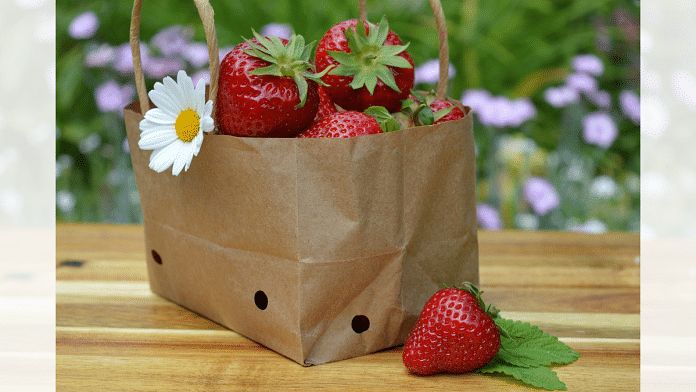Thank you dear subscribers, we are overwhelmed with your response.
Your Turn is a unique section from ThePrint featuring points of view from its subscribers. If you are a subscriber, have a point of view, please send it to us. If not, do subscribe here: https://theprint.in/
Being a parent to a Gen Z, numerous youth activities are commonly witnessed at home: the new generation lingo; the need for them to stay connected to everyone else at all times; the radiation onslaught on their eyesight, engrossed in an online game even while seated just opposite one another; ordering food on Zomato or Swiggy at odd hours and so on. Often, while clearing the table of the paper trail left scattered on it, I wonder if we are going overboard with paper accessories now!
Food delivery systems offer attractive packaging from various food chains, franchises and individual shops for home delivery. Aesthetic packaging is obviously a successful part of their marketing strategy. One notices paper bags of different sizes which carry beautifully designed and curated paper boxes containing food. These boxes, in turn, also encase tinier round, rectangular or square paper cases holding food accompaniments such as sauces, chutneys and salads. Interestingly, paraphernalia like wooden spoons, forks and paper serviettes are also thoughtfully packed, again in separate paper bags! Some bags carry the message of being reusable or recyclable but I wonder how many customers would heed the suggestion. There might be a few like me who would save these bags and boxes to store vegetables like green chillies, coriander or mint leaves in the refrigerator but I wager that a majority of these find themselves in trash bins. The need to completely roll and wrap, say a kathi -roll or a burger in attractive paper, then placing it in another prepossessing rectangular or square box, again keeping this in yet another impressive carry bag, is probably a good marketing strategy but arguably not the best practice for sustainability or recycling. These may only be essential when one is away from home or is travelling or maybe even when combating the contingency of paucity of water at home.
After the phase of using plastic indiscriminately and posing a serious threat to our ecosystem we are now turning to the use of paper, which is understood to be ecofriendly and biodegradable. Paper, as we know, is made from cellulose and trees are the primary source of cellulose fiber or wood pulp. Paper can also be made from cotton, flax, esparto grass, straw, hemp plant, manila (abaca leaves) and jute. Regardless of the source, fiber is required to make paper. Paper can also be made by recycling paper products. The recovered fiber thus obtained, can be used to produce new paper products entirely from the salvaged fiber or from a blend of recovered and newly acquired cellulose fiber. With the rising demand of paper products, recycling is a desirable trend to reduce the adverse effects on the environment such as deforestation.
A positive noticeable trend in multi- brand stores, at the shopping malls in India, is that the billing staff enquires if customers would prefer to buy a paper bag to carry their purchases or use their own cloth or paper bags. This is a good practice to reduce undesirable wastage and march towards sustainability. Over the last few years most of us have got used to carrying our own bags to the market. It just takes a few days to break one habit and start a new one for larger good. Awareness with a small mindset change that can look beyond instant convenience like accepting a plastic bag from the fruit vendor or separate paper bags for each item purchased from a shop; choosing the option of taking the bag offered by parting with a small amount as it is of minuscule value, compared to the purchases made in the shopping mall; all such momentary and unplanned actions add up to unnecessary paper consumption.
For home delivery of food, a similar option must be given during the online ordering stage itself, by every food delivery company. Whether or not one wishes to have the wooden cutlery and other miscellaneous articles to accompany the food order, must be left to the customers. The premise rests on the fact that we can use our own home cutlery and crockery. Only a single layer of food packaging could also be considered, carried in a bag that may be returned immediately for re-use in subsequent deliveries. It is heartening to find that a few companies like Zomato already offer “no cutlery” option, which a majority of us tend to ignore. A small monetary incentive could be offered by companies to those choosing to refrain.
The use of earthen bowls, newspapers for gift wrapping, reusing glass bottles or judicious use of water are small but positive trends and practices at the individual level towards sustainability. However, an honest endeavour by all stakeholders is the key for attaining harmonious equilibrium between our needs and nature’s wellbeing.
Views are personal.
These pieces are being published as they have been received – they have not been edited/fact-checked by ThePrint.

